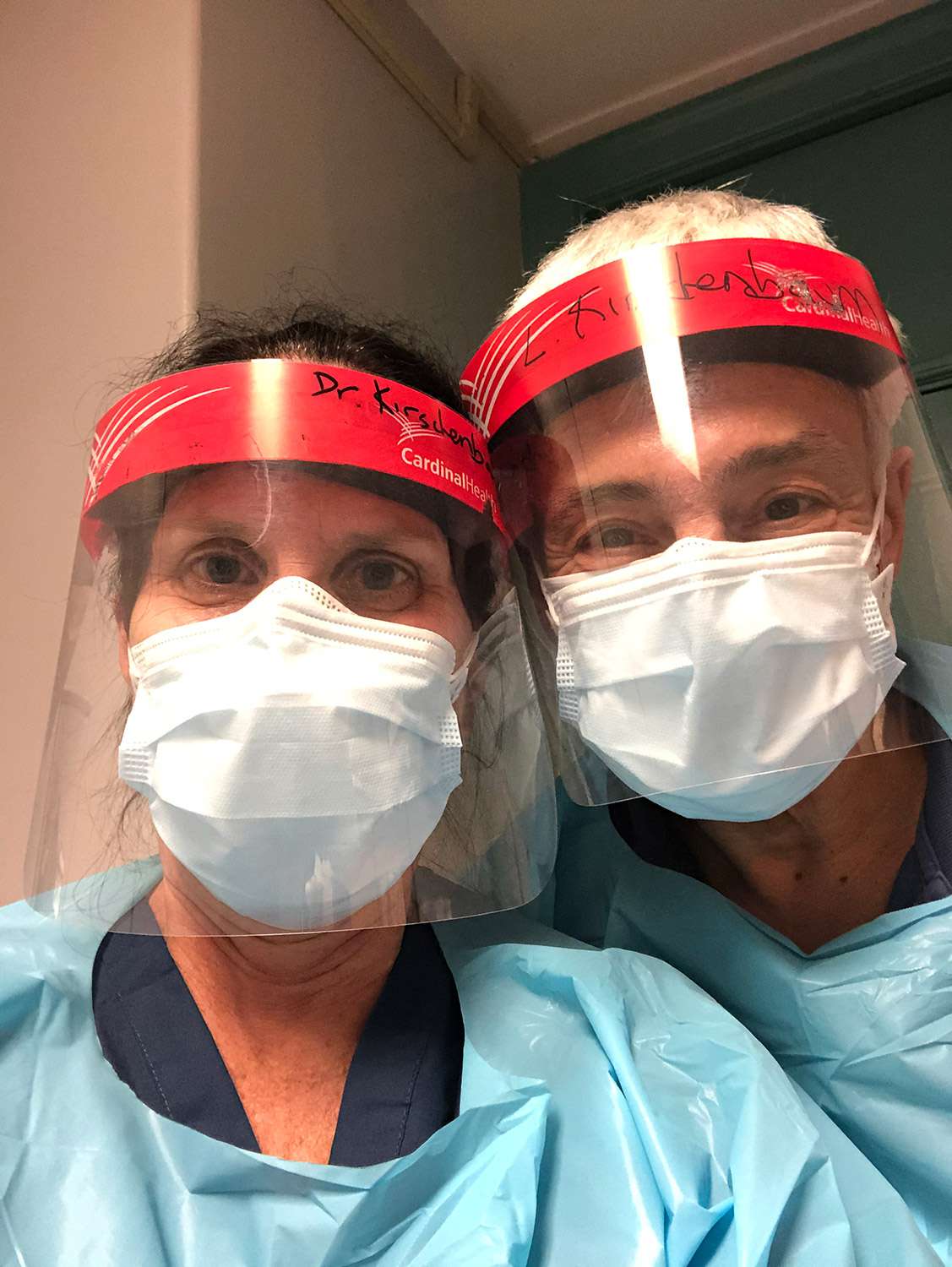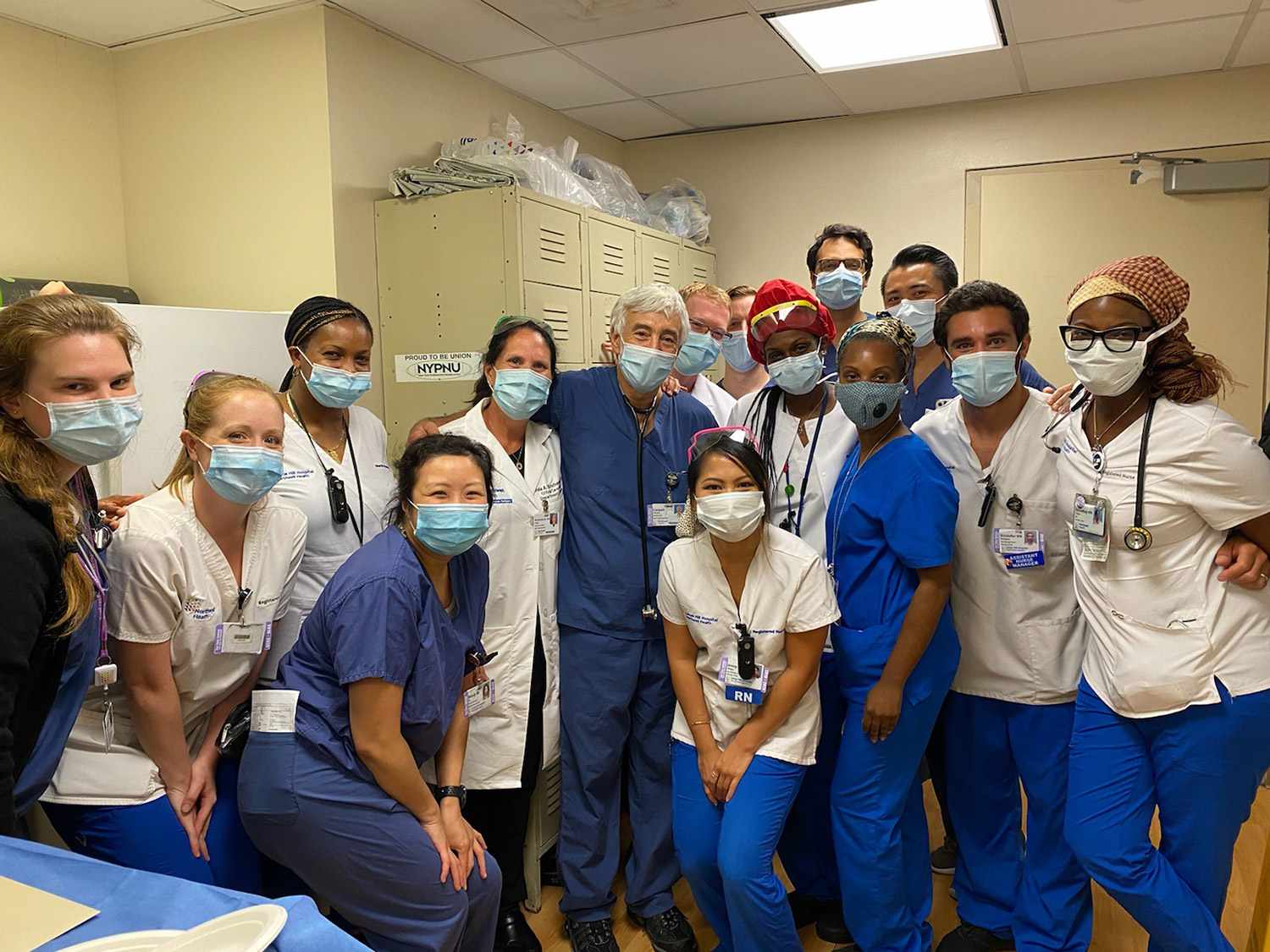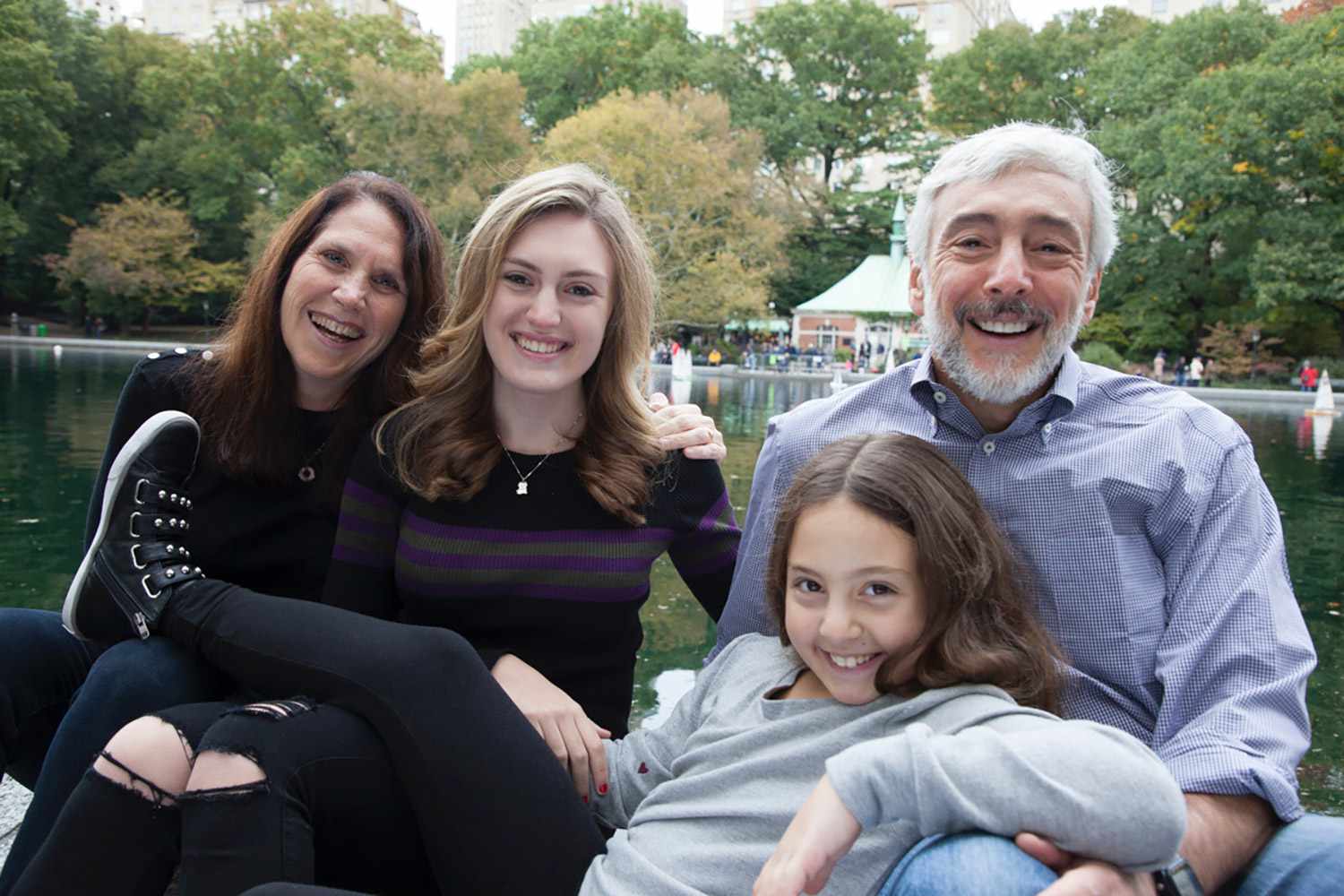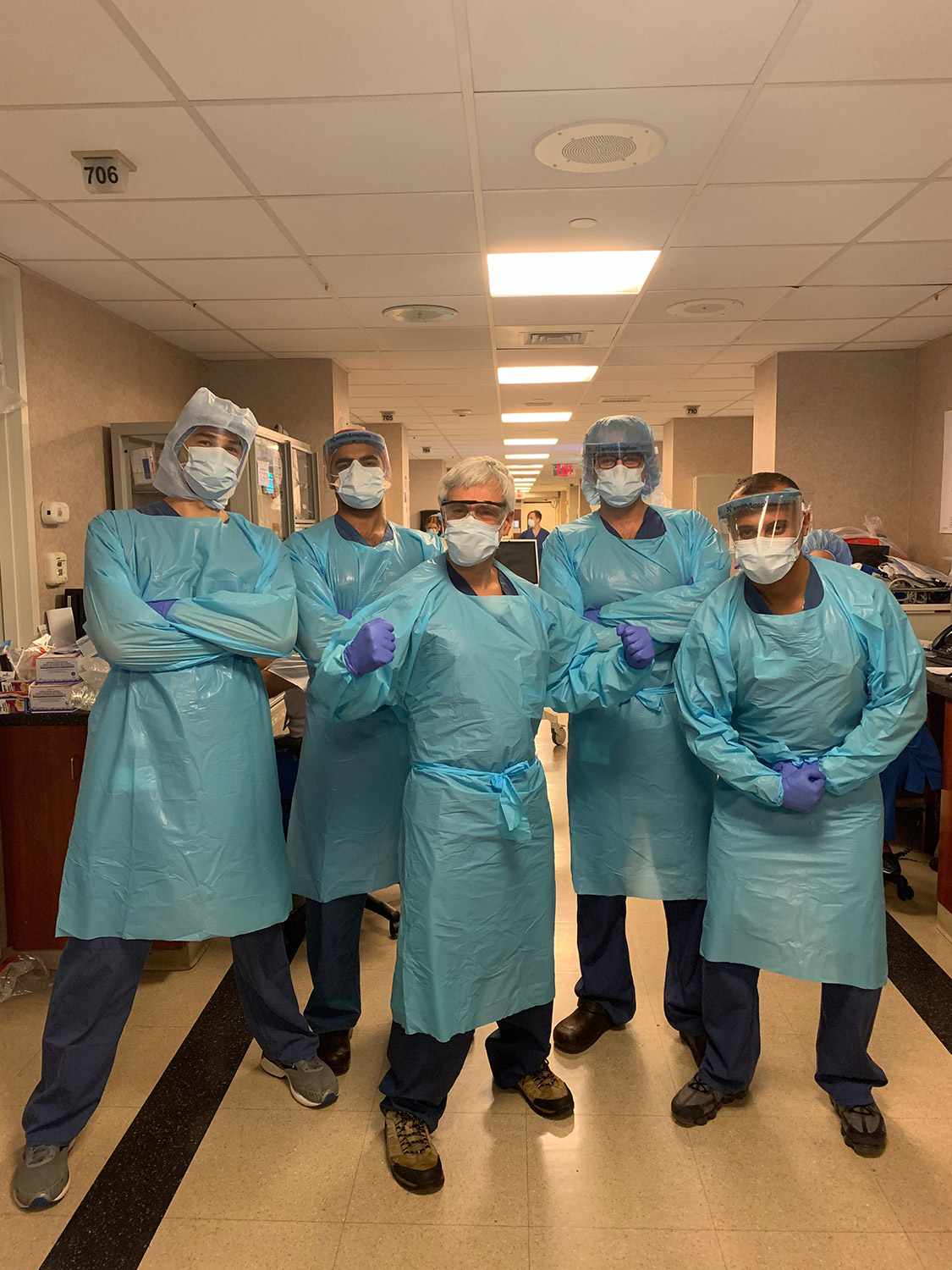
Married since 1996, Drs. Linda Kirschenbaum, 57, and Charles Carpati, 62, together run the Critical Care Unit at Lenox Hill Hospital in New York City. They met in 1990 while working on the frontlines of the AIDS epidemic at N.Y.C.'s Saint Vincent Hospital, and have spent the past 10-plus months navigating the challenges of the coronavirus pandemic in what became one of the epicenters of the disease. Parents to two daughters, they managed to stay healthy up until receiving their COVID-19 vaccines together in late mid-December, getting their second shots in early January. This is their story, as told to PEOPLE.
Dr. Linda Kirschenbaum, Associate Chair of Quality for the Department of Medicine: Getting the vaccine was the culmination of a lot of different emotions. We've been working together during the pandemic since last March, and getting vaccinated was sort of a huge relief, as if a burden was being lifted from my shoulders. It was sort of a sudden realization that there was a light at the end of the tunnel. Being able to share that moment with Charlie, when we have shared so many other moments during this really long road throughout the pandemic, was just that much more special and emotional.
Dr. Charles Carpati, Clinical Chief of Critical Care Medicine: Living together, we've shared a lot for many, many years. We've had to share a lot over these 10 months and support each other, and being able to go through this potential threshold that might be the beginning of the end of this — and hold my wife's hand through it — was very special, a signature moment in our lives.
The vaccine clearly is big in terms of giving us hope. We've been holding down the fort and the vaccine is kind of like the cavalry. There is this subsequent wave that's occurred — we have quite a few patients right now. But we're hopeful because we think we know more about what we're doing; our protocols have more science to them. By and large, patients who get here early enough are doing better.
We're a little upset that some people put themselves and their families and neighbors in danger by not adhering to common sense protocols. However, in healthcare you can't really be angry. We're here to treat patients, and when they come to us, no matter how they got the disease, we've got to do our best for them. Overall we're very hopeful. We think this is going to get better.

Linda: I feel like in March we were running on adrenaline. We had started to prepare well in advance of receiving our first patients. We reached out to physicians in Wuhan, China, who were involved in the early stages of the pandemic there. We had a call with physicians in Milan, Italy, after they had gone through their own surge. There was new information coming out every day.
I remember being in meetings where we prepared for two scenarios: one small constant trickle of patients coming in, or a tidal wave. We got the tidal wave. From an administrative standpoint, our leadership at Lenox Hill and [parent company] Northwell Health did a tremendous amount of prep work for that tidal wave. And a wonderful thing that happened here was that everybody put everything down and said, "I'm here, what do you need, how can we help?" Physicians from the medical subspecialties, surgeons, nurses, lab technicians, respiratory therapists, environmental workers, all deployed to assist in the care of our COVID-19 patients. A lot of walls came down and the feeling of solidarity in the hospital really continues to prevail. That's been a silver lining.
At home, Charlie and I have used each other as a sounding board — we understand each other since we're in the same profession. Sometimes it has helped to go home and be able to vent, but we also know how to turn it off and focus on our two girls. That is even more important; this has been a struggle for them, too. Our older daughter has been home from college since mid-March and our younger daughter is in middle school adapting to remote learning, so both are going through their own challenges and emotions on top of worrying about us.
I was never really concerned about bringing COVID-19 home, but there was a point in the beginning where Charlie and I looked at each other and said, "We are in an older age group, we have two children that are still dependent on us and we are walking into the fire." We certainly had concerns. I have to say I've felt much more vulnerable caring for COVID-19 patients than I did for AIDS patients. The potential for transmission is much higher.

Charles: We were worried at the start: we were facing unknown things. No one, I think, could really conceive of the transmissibility of this virus — many people have trouble with that concept even now. But there wasn't any time to think about terror. We would cross the threshold at the hospital, point to the first person we met and pretty much assume they were functioning to the best of their abilities. They were rocking it, and it was a special feeling, knowing they were thinking the same about us. It was a privilege that made up for any kind of terror. And as time went on and it was clear the staff was able to stay safe using their personal protective equipment, that reinforced our ability to render care and support each other.
Linda: We definitely felt the turning point here in New York City when the cases dropped off after the lockdown that occurred. It was pretty dramatic as we surged through March and April; in May the numbers started to decline. Through the rest of the spring and summer we could count our COVID-19 patients on one hand, so to speak. It was clear during that time a feeling that we had gotten through this, but we also knew that flu season was coming in the fall and some of the things associated with the likelihood of coronavirus transmission — changing weather, everyone being indoors more — were going to lead to a second surge.
I'm a little nervous: the numbers are going up. We're hoping that this is just a post-holiday blip and it's not going to get worse. We are cautiously optimistic.

Charles: We've been in New York City for much of our lives, and we're saddened looking around. A lot of people are suffering economically. But we're hopeful that the vaccine allows the economy to get better and for people to get back on their feet and resume their lives.
The history of vaccines is almost uniformly positive. If you look at the lives saved by the myriad types of vaccines, compared to the number of negative experiences like anaphylaxis or allergies or other side effects, the risk benefit far favors vaccines. It's true that these COVID-19 vaccines were developed quickly and the number of people in the studies, though large, pales against people who've had other vaccines before they were approved, but if you look at people who've experienced COVID-19, particularly young people who've had prolonged side effects affecting many organs, the risk benefit definitely favors the vaccine. I have no qualms about taking it and I always suggest to people who ask that they go ahead and take this vaccine, too.
Linda: I'm really looking forward to getting back to normal life, going to concerts, the theater, on vacation and seeing our kids back into their normal routines.
Charles: I'm looking forward to getting our city back and having people thrive again.
— As told to Kate Hogan
As information about the coronavirus pandemic rapidly changes, PEOPLE is committed to providing the most recent data in our coverage. Some of the information in this story may have changed after publication. For the latest on COVID-19, readers are encouraged to use online resources from CDC, WHO, and local public health departments. PEOPLE has partnered with GoFundMe to raise money for the COVID-19 Relief Fund, a GoFundMe.org fundraiser to support everything from frontline responders to families in need, as well as organizations helping communities. For more information or to donate, click here.
Source: Read Full Article
